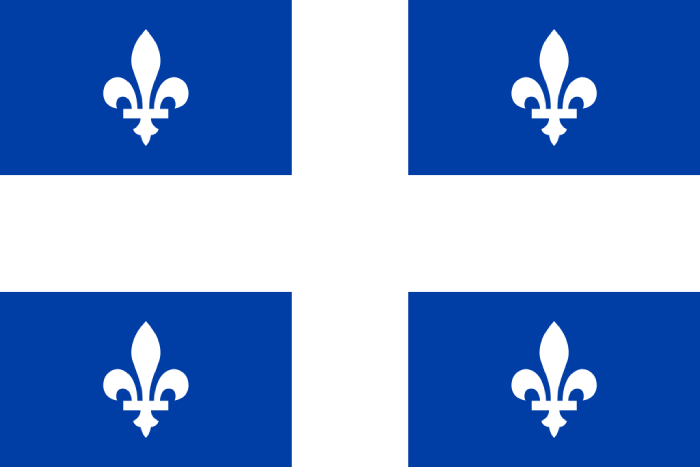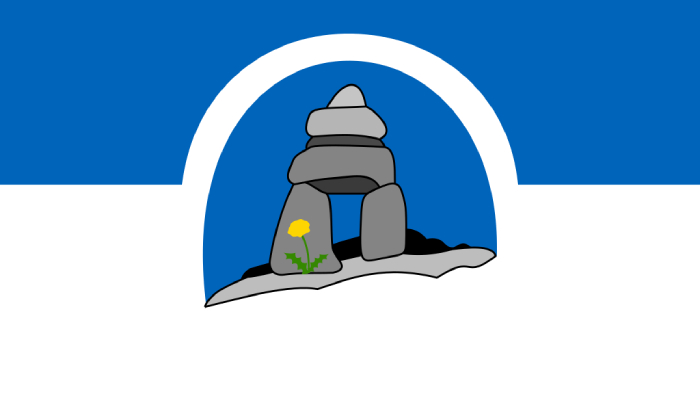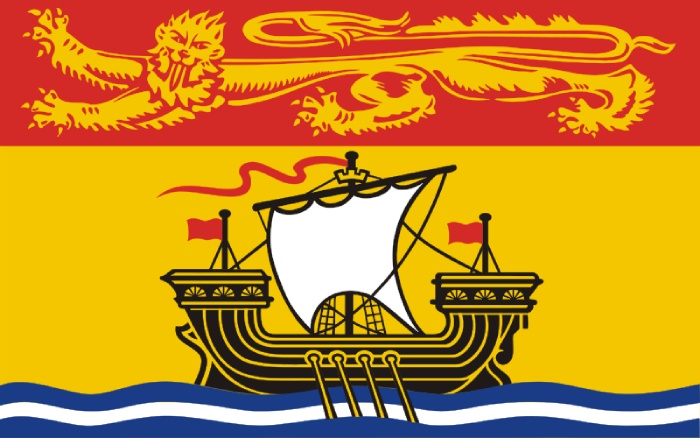Bilingualism in Canada

Quebec, New Brunswick, Ontario – how common is French in these provinces?
As the Encyclopedia Canadienne argued back in 2021, before the French Language Respect Act (aka Bill 96) was passed, tensions between English-speaking and French-speaking Canadians had reached the level of the 1830s, when the British military suppressed the Francophone rebellions in Quebec. Quebec then wanted to form a separate republic.
Now separatist sentiment is not as strong in Quebec, but still, just recently the province was trying to secede from Canada, and three-quarters of Francophones approved of Bill 96 in 2021.
In 2016, 71.2% of Quebecers identified French as their native language and 85.4% identified French as their preferred language among the official languages. That's 6,890,305 people. 95% of Quebecers said they could speak French fluently.
The provincial government still believes that the French language is on the verge of extinction and makes policy decisions that discourage immigrants. Let's find out how strong nationalism is in the most multicultural country in the world.
A History of Bilingualism in Quebec

Although Francophones made up a large part of the population of Quebec before and after the conquest of New France by the English in 1760, the federal Official Languages Act, which made English and French equal, was passed only in 1969. Since its adoption, all official institutions in Canada are required to provide services in English and French, if the visitor so wishes. French became the only official language in Quebec even later, on July 31, 1974.
Quebec was able to achieve this thanks to the Quiet Revolution. This is the name given to the era of reforms carried out by the Liberals in the 1960s.
What reforms directly affected national identity?
- New laws on education led to a study of its quality, after which public schools were taken out of the control of the Catholic Church.
- Private hydroelectric power plants were nationalized, and all documentation and working communication was conducted in French.
- The same happened in education, social welfare and health care, as well as in public institutions at all levels.
- Quebec withdrew from several federal programs of distribution of budgetary money: the province began to collect taxes, pay pensions, finance the health care system, etc.
- Quebec opened representative offices in Paris, London and New York, and later scandalously won the right to sign international agreements on its own.

This weekend Canada switches to winter time

A new era for Canadian athletes

Canada celebrates its National Day and reflec...

Rising inflation in May threatens rate cuts i...

Canada Prepares for a Sharp Increase in the E...

High Auto Insurance Rates for Immigrants Spar...

Canadian intelligence raises alarm: China's i...

Canada continues to attract skilled professio...

How the food supply chain in Canada works and...

The mysterious disappearance of a taxidermy g...

The remains of a mysterious ship have been fo...

Saskatchewan raises age limit for tobacco pur...
The Quiet Revolution also had a terrorist component. "Between 1963 and 1970 the Quebec Liberation Front carried out at least 200 bombings, mostly in the English-speaking neighborhoods of Montreal, robbed banks, kidnapped the British Trade Representative in Montreal and the Quebec Minister of Labour and Immigration. Then Prime Minister Pierre Trudeau used the Military Measures Act for the first time in Canadian history and brought order.
Nevertheless, Quebecers have achieved recognition. In addition to passing the above laws, in 1975 they were allowed to make their own Charter of Rights and Freedoms the main provincial law, and in 1977 to adopt the Charter of the French Language.
Three English-speaking Quebecers, a painter, a fashion designer and an undertaker, tried to prove in court that the French Language Charter violated their rights. They served English-speaking customers but had no right to hang signs in English. In 1993, they got as far as the UN Human Rights Committee. The UN Committee agreed that banning English-language signage violated free speech. Courts and appeals on various aspects of the issue dragged on until 2016. In the end, the French Language Charter was amended: French lettering must appear on every street sign and be as visible as English. For example, Walmart had to add the French word Supercentre to its signs.
In 1978 Quebec signed the Couture-Cullen agreement with the federal government, allowing self-selection of immigrants. This made it possible to invite francophones.
In 1980, the first referendum on the secession of Quebec took place. 59.56% of the province's residents voted "against" and 40.44% voted "for".
The Official Languages Act was rewritten in 1988 and amended in 2005. All these changes were intended to ensure that there would be enough employees speaking French in Canada's federal agencies. But in fact, even in 2021, the president of federal Air Canada told reporters that he didn't know French and lived perfectly well in Montreal speaking only English.
The second referendum on Quebec secession was held in 1995. The voter turnout was the highest in the history of Quebec, 93.52%. The vote was almost equally divided: 49.42% for and 50.58% against.
Proponents of secession claimed that the "no" votes were bought. The Prime Minister of Canada, who was himself a Quebecer and had long taken a neutral stance on secession, was tried to kill by a crazed nationalist with a knife. The Saskatchewan government also began to consider secession from Canada.
The federal government then appealed to the Supreme Court of Canada, which ruled the unilateral secession illegal. But in 2006, Quebecers were officially recognized as a separate nation within Canada.
In 2022, Quebec passed the French Respect Act. A few days after the official adoption of the law, the provincial government announced that it would give itself a year to work out its practical application. Let us list the most controversial points:
- immigrants are given only six months to learn French, after which they cannot receive any public services in English;
- children of temporary residents will be allowed to study in English schools, but not longer than three years;
- birth and marriage certificates are already issued only in French;
- in the courts will be spoken only in French;
- all service businesses must switch to French — or prove that they can't do without it;
- the number of places for English-speaking students in colleges will become even smaller;
- companies with 25 or more employees are required to obtain a franchise certificate.
A History of Bilingualism in New Brunswick
New Brunswick is the only officially bilingual province in Canada. The province's French-speaking residents are called Acadians. French is the mother tongue of 234,966 people.
New Brunswick, Nova Scotia, Prince Edward Island, and parts of the American state of Maine were once part of the French colony of Acadia. In 1760 Montreal fell, and in 1763 France signed a treaty with Great Britain ceding all Canadian territories. The Acadians moved to French Louisiana.
Later they were allowed to return, but the fertile lands had already been occupied by the British. The Acadians had to settle on the coast itself, in New Brunswick and on Prince Edward Island. After the American Revolution some 14,000 Loyalist refugees arrived on the north shore of the Bay of Fundy, founded the town of St. John, now the second largest city in New Brunswick, and settled the valleys of the St. John and St. Croix rivers.
In the 1880s, the Acadians collectively decided that they were a separate nation, unrelated to the people of Quebec, designed their own flag and chose the medieval anthem Ave Maris Stella as their anthem. While Quebec's flag was a hybrid of the Bourbon royal banner and the French naval flag, the Acadians took the French flag and added to it the yellow star Stella Maris, the symbol of Our Lady of the Star of the Sea.
The flag of New Brunswick looks different: it shows the heraldic shield granted to the province by Queen Victoria in 1868.
The percentage of Francophones in New Brunswick has not changed much since the 1930s. In 1871 French-speaking residents in the province were 16%, in 1901 24%, and in 1931 and 2016 34% and 32%, respectively.
In 1972, a separatist political "Acadian Party" emerged which fought for the interests of French-speaking communities in the province and advocated the creation of a separate Acadian province within Canada. Party leaders emphasized that they were not nationalists and were not against Anglophones, but believed that French-speakers were being economically disadvantaged.
When the Acadian Party finally succeeded in 1978, squeezed the Liberals and persuaded the provincial government to pay attention to the rights of Francophones, the Act recognizing the equality of the two official linguistic communities in New Brunswick was passed in 1981.
At about the same time, a branch of the "Party of the Confederation of Regions" was organized in New Brunswick. Its leaders were in favor of keeping French as the official language only in municipalities where many Francophones lived. Its 21% of the vote in New Brunswick in 1991, the party's greatest success ever, shows that part of the province's English-speaking population did not like the official bilingualism.
When the Confederate Party of Regions became the official opposition, that is, the party that came in second place in the provincial elections, the Liberals then in power worked hard to ensure that New Brunswick's bilingualism was enshrined in federal laws. In 1993, the latest addition to the Charter of Rights and Freedoms was added:
16.1 (1) The English language community and the French language community in New Brunswick shall have equal status and equal rights and privileges, including the right to different educational institutions and such different cultural institutions as are necessary to preserve and develop those communities. (2) The role of the legislature and the government of New Brunswick in preserving and promoting the status, rights, and privileges specified in subsection (1) is affirmed.
A History of Bilingualism in Ontario
The aforementioned section of the Charter in the Ontario provincial court found to be applicable to Ontario as well. In 2000, the court forbade the closure of Montfort Hospital, the only hospital in the province where you can get care in French.
The province of Ontario once belonged to New France. More Francophones live in Ontario than in New Brunswick: 622,415 in 2016. Almost half — 43.1% — live in Eastern Ontario, along the border with Quebec.
For two centuries the French-speaking people of Ontario have tried to assimilate. But they never succeeded, and Quebec's Quiet Revolution provoked a surge of nationalism wherever French Canadians lived in clusters. Formally, after the federal Official Languages Act was passed in 1969, Ontarians had the right to receive services in French, but in fact there was no such option.
Activists wasted road police time refusing to speak English, appealed fines and demanded real bilingualism in court. Eventually the Ontario government passed the French Language Services Act in 1982.
Bilingual public services and bilingual inscriptions are only available in Ontario municipalities where there are many Francophones, for example, in cities where French is the mother tongue of most of the population. By law, services in French must be provided where 5,000 or more French speakers live, that is, in all large cities.
Some French-Canadians in Ontario continued to refuse to pay traffic fines, now legally, because the monolingual signs became invalid overnight. Municipalities had no money to replace all the signs and signs with bilingual ones. It took seven years for lawyers in Ontario to get to the bottom of this issue and to prove that municipalities are not obliged to change absolutely all road signs.
Ontario's Francophones also have their own flag, created in 1975. When, in 2018, the Ontario government wanted to save money and reduce the public institutions that protect the French language in the province, Quebec raised this flag in solidarity. Faced with public condemnation, the government backtracked.

After Ontario, the Francophones of all the provinces and territories began to design their own flags, the Northwest Territories and Nunavut being the latest to join. There, France is symbolized by a white bear with a heraldic lily and an igloo with a dandelion.


How do Canadians feel about French nationalism?
The results of the Fall 2021 poll show that people approve of bilingualism but disapprove of Bill 96:
- 67% of Canadians are proud to live in a bilingual country (most proud are in Quebec, the Atlantic provinces and Ontario);
- 89% of Canadians outside of Quebec spoke out against Bill 96, although 43% in 2021 had not heard of it until they were approached about it;
- 9% of English-speaking Canadians outside of Quebec are proficient in French;
- 45% of Canadians outside of Quebec do not know French at all.
In Quebec itself, the picture is different:
- 62% of Francophones support Bill 96;
- 77% of Francophones are concerned about the future of the French language;
- 80% of Francophones believe that Bill 96 is necessary to protect the language;
- 95% of English-speaking Quebecers are against Bill 96;
- 90% of English speakers are not worried about the future of the French language.
At the same time in Quebec, 55% of francophones are fluent in English. Only 3% of Quebecers answered that they do not speak English at all.
Sociologists observe a connection between age and concern for the preservation of the French language: in Quebec, 72 per cent of people over 55 worry about its future, and only 54 per cent of those aged 18 to 34. Residents are more worried in places in Quebec where there is little or no growth in the English-speaking population.
47% of Francophones of the older generation believe that Bill 96 will make a difference. Forty-six percent of Francophones aged 18 to 34 disagree with them — they believe that Bill 96 will not bring any change in their lives.
Nevertheless, 62% of Quebecers think Bill 96 will damage the province's reputation and 36% of Quebec francophones say other ways could be found to protect the language. 44% fear that Bill 96 will lead to an exodus of entrepreneurs from the province, and 55% fear that no one in the province will want to start a new business.
Forecasts
People who feared outrage from Anglophones in Quebec and the rest of Canada were right. La Francophonie, an international organization, estimates that 29% of French speakers in Canada are those who can maintain a conversation in French. On the face of it, there is no problem.
Nevertheless, thanks to immigration, a growing number of people in Canada speak languages other than French or English — 21% of the population as of 2016. French is more vulnerable in this situation. A study published in 2020 found that 40% of companies in Quebec expect an applicant to be able to speak English when hiring. There are even more such companies in and around Montreal — 63%. In theory, French could disappear in the next generations, because in Quebec, francophones are already mostly bilinguals, people who are equally bilingual.
Quebec is changing its immigration policy so that people coming from other countries will either learn French or be francophones to begin with. One of its stated goals is to make sure that newcomers don't leave once they gain permanent resident status. Most likely, Quebec won't be prevented from increasing the number of francophones at the expense of immigrants — some of them will move to other provinces anyway, despite attempts to retain them. But without a knowledge of French, or a willingness to learn it, it is best not to immigrate to Quebec. If you're not sure you want to live in a French-speaking community but want to try, choose New Brunswick.
And for all of Canada, Quebec's language policy means that sooner or later, if bilingualism is taken seriously and bilinguals are appointed to all important positions in the federal government and institutions, almost all of them will be Quebecers. French is already an advantage for both government jobs and immigration, but extending Quebec's influence to all of Canada seems unlikely.



















